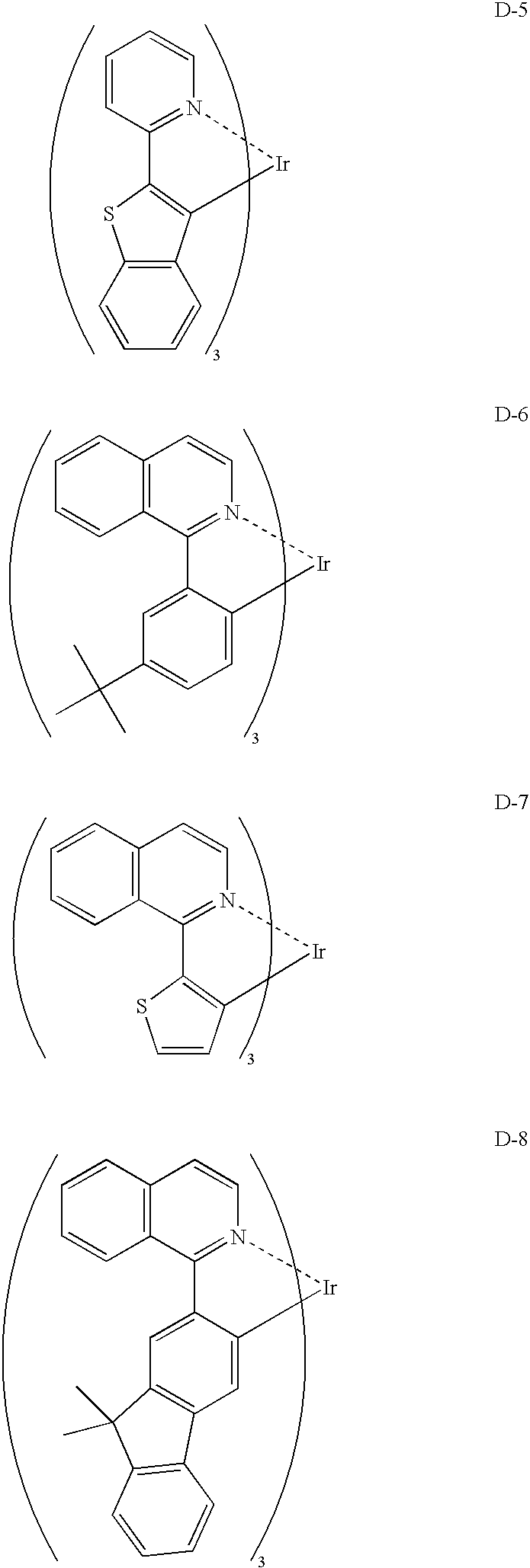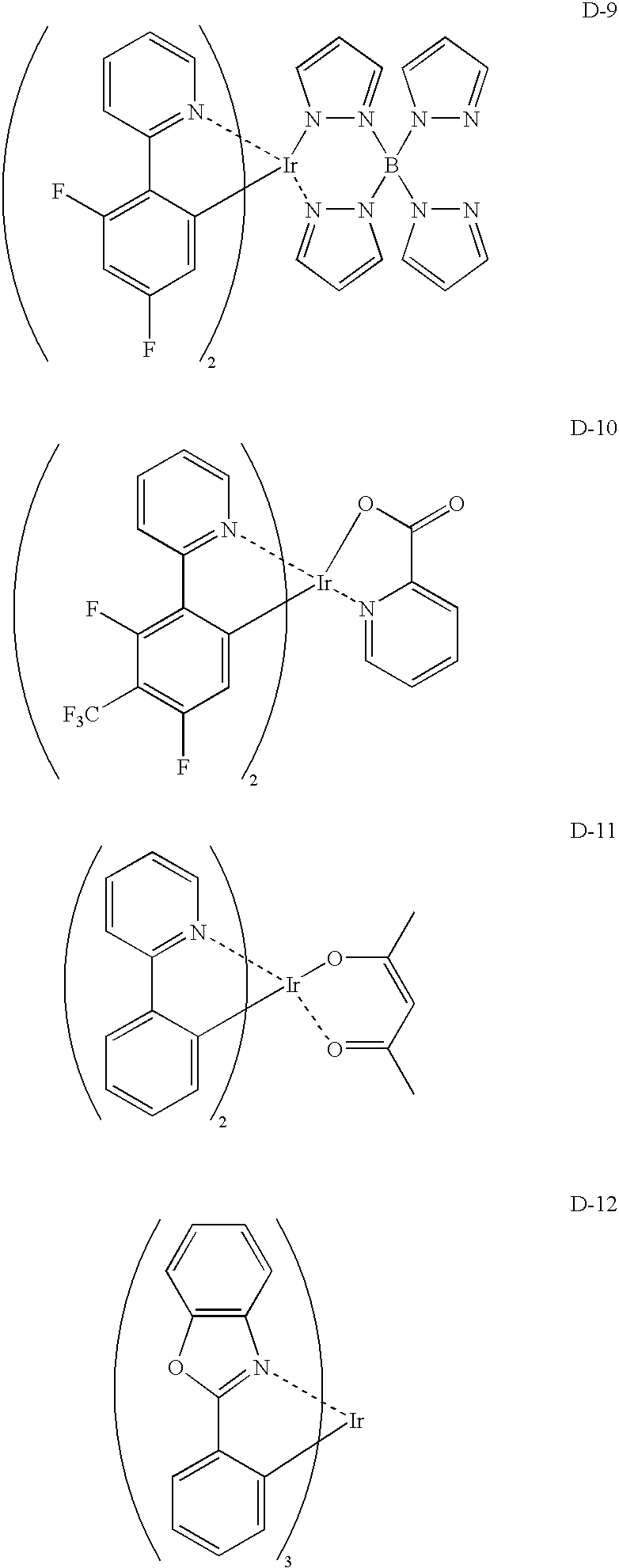Organic electroluminescent element
a technology of electroluminescent elements and organic materials, applied in the direction of discharge tube luminescnet screens, other domestic articles, natural mineral layered products, etc., can solve the problems of deterioration of quality during continuous driving, incidence and growth of non-luminescent elements, and yet many problems to be solved
- Summary
- Abstract
- Description
- Claims
- Application Information
AI Technical Summary
Problems solved by technology
Method used
Image
Examples
example 1
[0184] An ITO glass substrate (2.5 cm square×0.5 mm thick; manufactured by GEOMATEC Co., Ltd., surface resistance 10Ω / □) was placed in a washing bath and, after ultrasonic cleaning in 2-propanol, the substrate was treated with ozone with UV irradiation for 30 minutes. The following layers were deposited on this transparent anode by vacuum deposition. The deposition rate in this example is 0.2 nm / sec unless otherwise stated. The deposition rate was measured using a quartz resonator. The thickness described below was also measured using the quartz resonator.
(Hole-injecting Layer)
[0185] Copper phthalocyanine: 10 nm thick (deposition rate: 0.5 nm / sec)
[0186]α-NPD: 30 nm thick (deposition rate: 0.3 nm / sec)
(Hole Transportable Buffer Layer)
[0187] CBP and phosphorescent dopant EM-1 were co-deposited in vacuum with a deposition rate of CBP of 0.3 nm / sec so that EM-1 accounts for 8% by mass of the total amount of the organic material in the buffer layer. The thic...
example 2
[0195] The organic EL element in Example 2 was prepared by the same method as used in the organic EL element in Example 1, except that, in the organic EL element in Example 1, deposition conditions of the hole transportable buffer layer and electron transportable buffer layer were changed as follows.
(Hole Transportable Buffer Layer)
[0196] Three components of CBP, electron transportable material ETM-1 and phosphorescent dopant EM-1 were co-deposited by fixing the deposition rate of CBP at 0.3 nm / sec and by gradually increasing the deposition rates of ETM-1 and EM-1 so that EM-1 accounts for 8% by mass of the total amount of the organic material in the buffer layer. The thickness of the laminate was adjusted to 10 nm, and the deposition rates were controlled so that proportion of CBP to ETM is 1:1 when the thickness had reached 10 nm.
(Electron Transportable Buffer Layer)
[0197] The deposition rates of CBP and ETM-1 were adjusted to 0.3 nm / sec, respectively, and co-deposition of t...
examples 3 and 4
[0201] The organic EL elements as those in Examples 3 and 4 were prepared by the same method as the organic EL elements in Examples 1 and 2 and Comparative Examples 1 and 2, except that, in the organic EL elements in Examples 1 and 2, luminescent dopant EM-2 was used in place of EM-1 used for the luminescent layer and buffer layer.
PUM
| Property | Measurement | Unit |
|---|---|---|
| Length | aaaaa | aaaaa |
| Length | aaaaa | aaaaa |
| Length | aaaaa | aaaaa |
Abstract
Description
Claims
Application Information
 Login to View More
Login to View More - R&D
- Intellectual Property
- Life Sciences
- Materials
- Tech Scout
- Unparalleled Data Quality
- Higher Quality Content
- 60% Fewer Hallucinations
Browse by: Latest US Patents, China's latest patents, Technical Efficacy Thesaurus, Application Domain, Technology Topic, Popular Technical Reports.
© 2025 PatSnap. All rights reserved.Legal|Privacy policy|Modern Slavery Act Transparency Statement|Sitemap|About US| Contact US: help@patsnap.com



